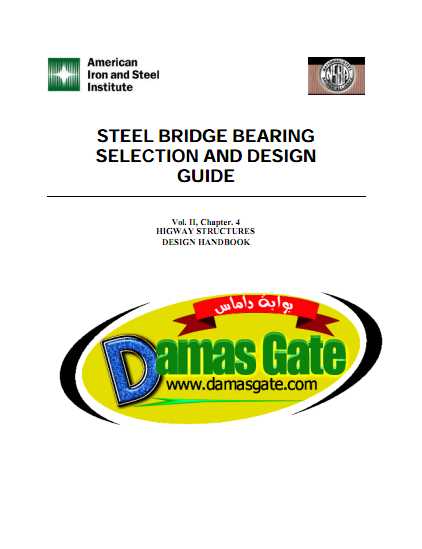Steel Bridge Bearing Selection and Design Guide

SELECTION OF BEARINGS FOR STEEL BRIDGES
This Selection Guide facilitates the process of selecting cost-effective and appropriate bearing systems for steel girder bridges. Its intended use is to provide a quick reference to assist with the planning stages of construction. The selection process is divided into three steps: Definition of Design Requirements, Evaluation of Bearing Types and Bearing Selection and Design. A more detailed analysis of bearing design is provided in the Steel Bridge Bearing Design Guide and Commentary in Part II of this document.
Step 1. Definition of Design Requirements
Define the direction and magnitude of the applied loads, translations and rotations using the AASHTO LRFD Bridge Design Specifications. It is important at this stage to ensure that
- the bridge and bearings have been conceived as a consistent system. In general, vertical displacements are prevented, rotations are allowed to occur as freely as possible and horizontal displacements may be either accommodated or prevented.
- the loads are being distributed among the bearings in accordance with the superstructure analysis.
- and that no inconsistent demands are being made. For instance, only possible combinations of load and movement should be addressed.
Step 2. Evaluation of Bearing Types
After defining the design requirements refer to Table I-A to identify the bearing types which satisfy the load, translation and rotational requirements for the project. This table is organized in ascending order
based on the initial and maintenance costs associated with each type of bearing. Read down the table to identify a bearing type which meets the design requirements at the lowest overall cost. It should be noted that the limits are not absolute, but are practical limits which approximate the most economical application of each bearing type. Ease of access for inspection, maintenance and possible replacement must be considered in this step.
Download
http://s18.alxa.net/s18/srvs2/02/001...sign.Guide.rar